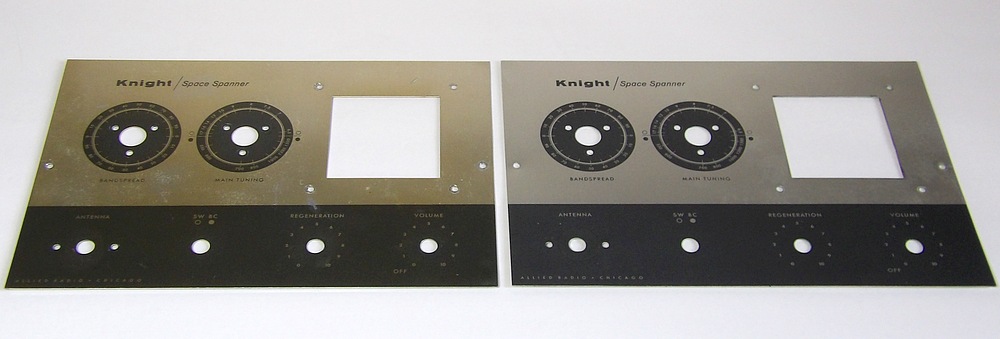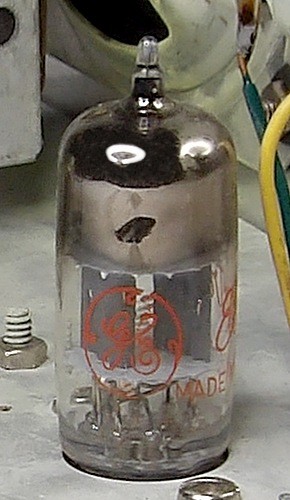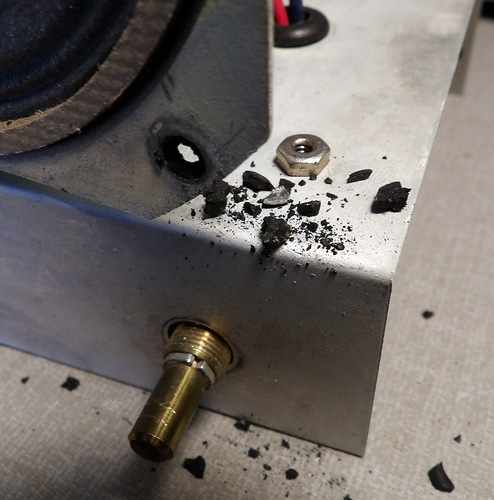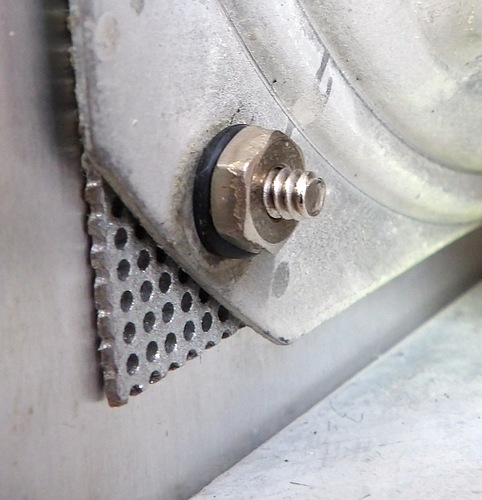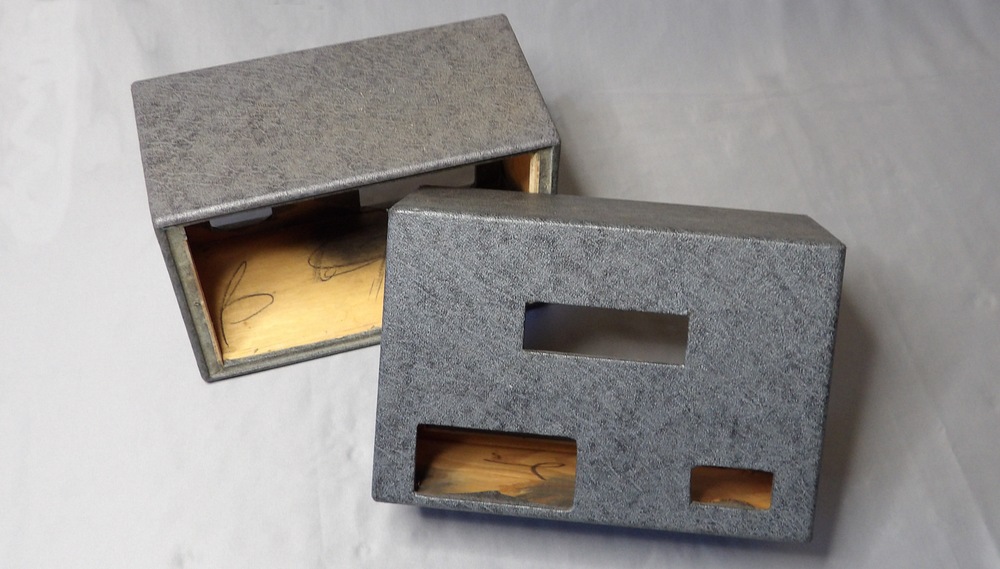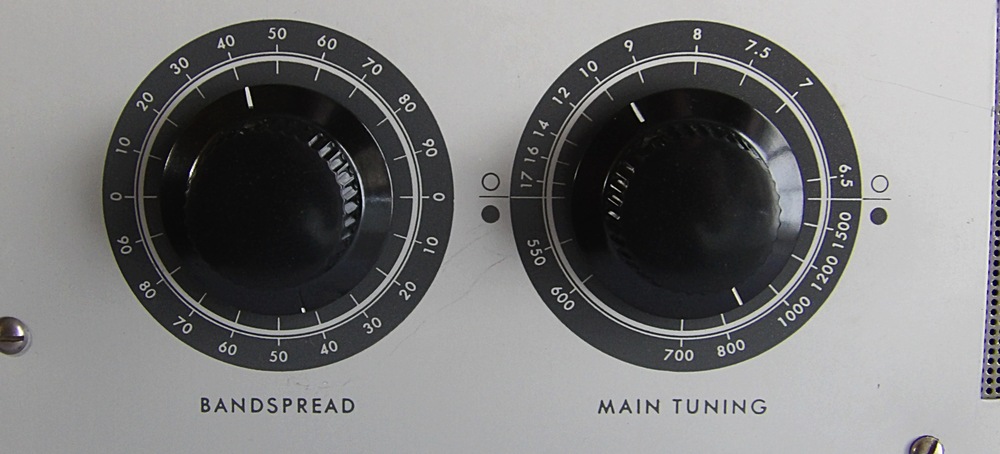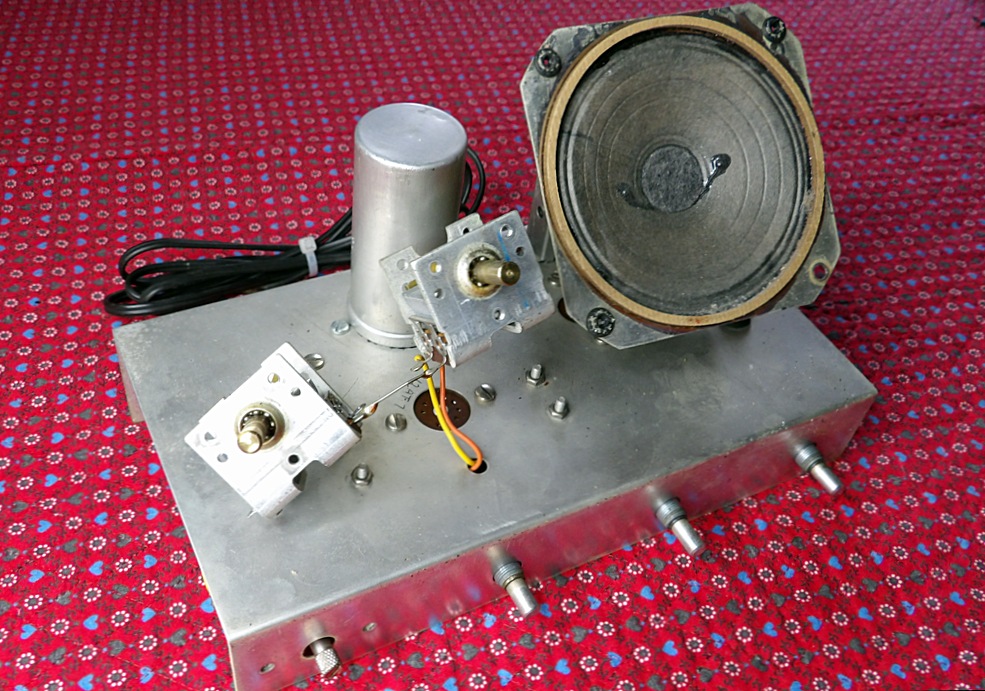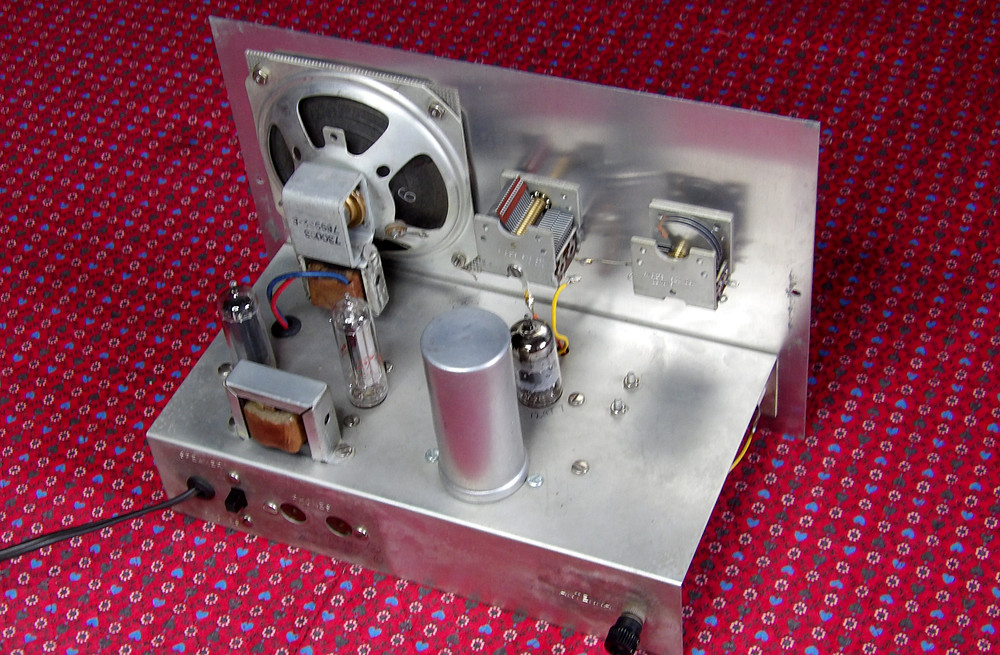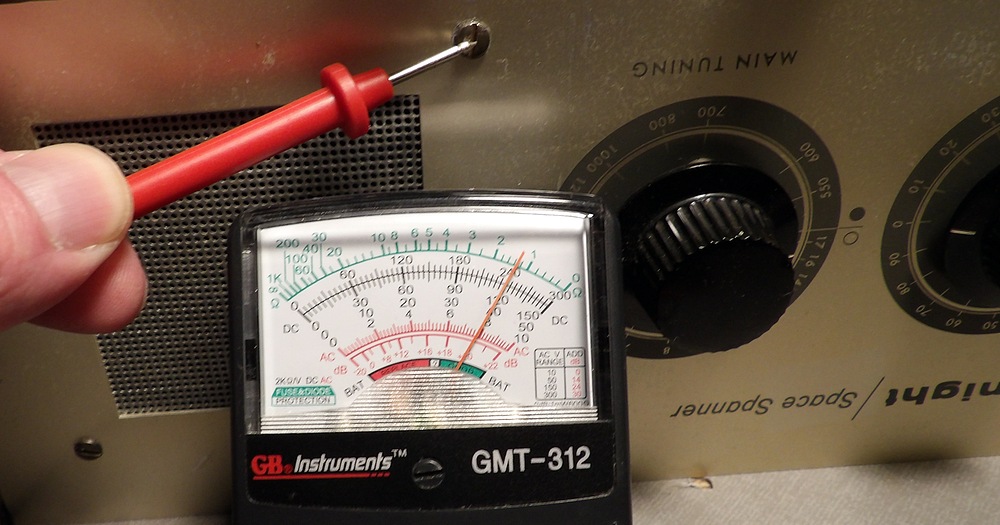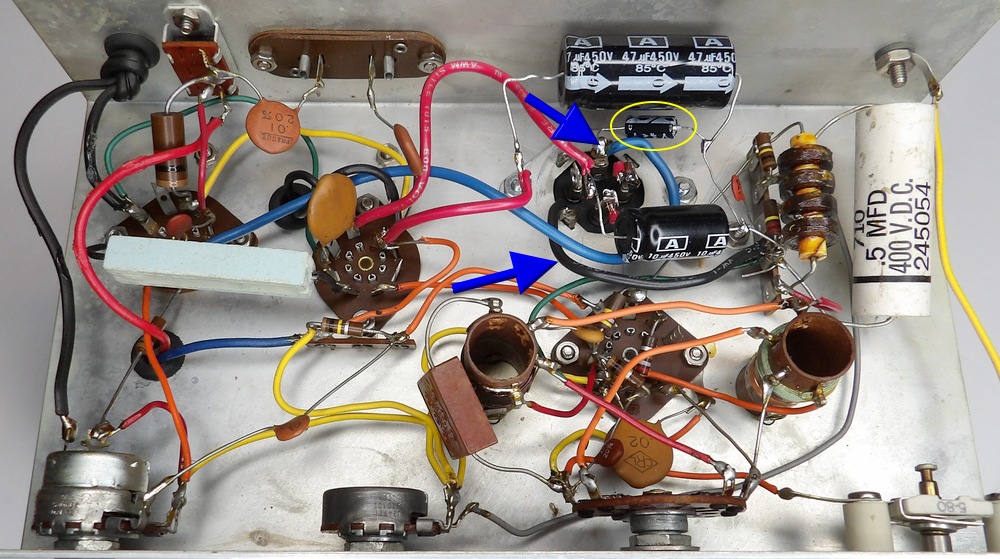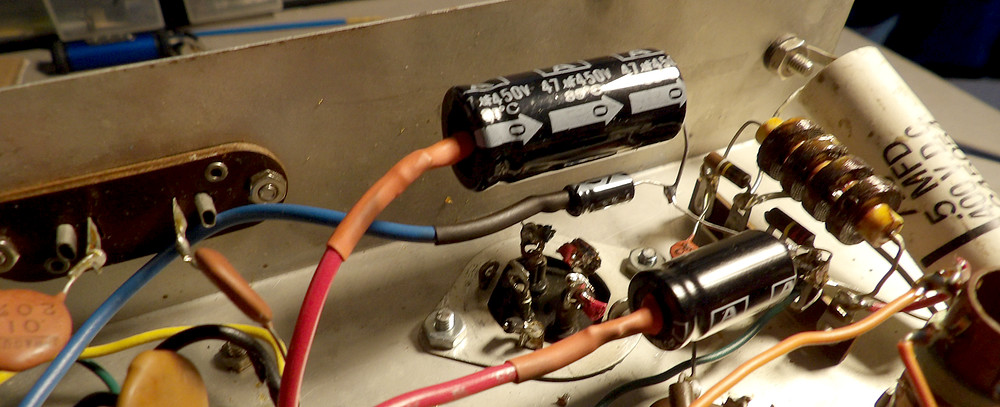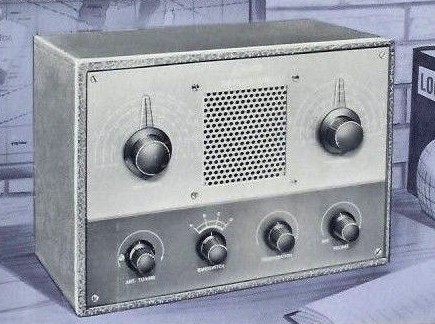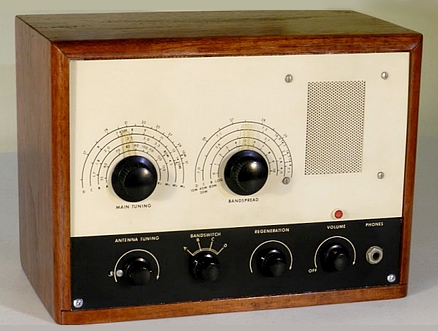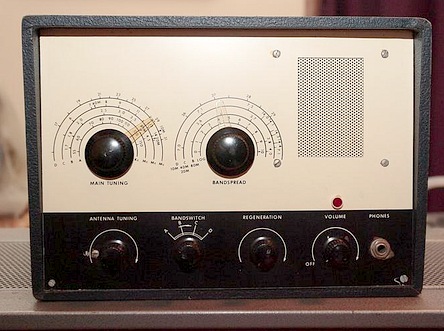|
|
|
|
|
A third Space Spanner |
|
|
|
|
|
A Space Spanner went up on ebay in February
2021. The front panel didn't look too bad, so I grabbed it
just to get the panel. |
|
|
|
|
A comparison of the two front panels.
The second panel (on the right) didn't look new, but it sure
looked better, |
|
|
|
|
|
It had a Mullard 12AT7 which I immediately
took to replace the Canadian GE that was in Tim's radio.
The 50C5 was labeled "Made for Knight by RCA," so that was
swapped too. The original had no markings on it. |
|
|
|
|
|
|
|
|
|
|
The grommets on Tim's speaker disintegrated
when I took the screws out. They were replaced with rubber O
rings. |
|
|
|
|
|
|
Both cabinets are in very nice condition. |
|
|
|
|
|
These cabinets were made by a
luggage company in Chicago named "American Trunk & Case, Inc." |
|
|
|
|
|
|
|
|
Tim's radio with the replacement front panel
and the proper screws. |
|
|
|
|
|
Very little panel oxidation, though you can
see some if the light is right. At least it's not gold
colored. |
|
|
|
|
|
|
|
|
|
Here's the Space Spanner from the
February ebay auction with the front panel off. The
metal capacitor can in the back isn't original to the radio. At some point
in time the filter capacitors failed and they were
replaced with the ones in the can. This wasn't a
good idea, the metal can is the negative side of the
capacitors and it's connected right to the chassis.
I have to admit it does look cool.
Connecting the negative side of the filter
capacitors to the chassis also connects one side of
the AC cord to the chassis. You have a 50-50
chance of being seriously shocked by touching the
chassis, depending on how the unpolarized plug is
inserted into the AC outlet. This is a "hot
chassis." Man, I coulda been zapped with this thing!
I wish I had some potential, but not that kind.
The dickens, you say. It was in a wooden cabinet,
you say. Yes, but the front panel is metal! |
|
|
|
|
|
|
From the rear, after the front panel was
swapped. That capacitor really makes the radio look good. I wish
they came that way. |
|
|
|
|
|
120 volts AC straight from the outlet to the
front panel. |
|
|
|
|
Under the chassis. It seems the
capacitors in the can failed and someone added some
new ones. They're floating in the air and have 130
volts on the bare wires. The black wire isn't
supposed to be there. The blue wire is connected to
one of the tabs on the can, so the old cap in the
can is still in the circuit, even though a new one
has been added.
The black wire is connecting the capacitors to
the chassis. Whoever did this didn't realize the
metal can was supposed to be isolated and just
re-made the electrical connection when it was cut
out of the circuit.
Click on the photo
for a larger version. |
|
|
|
|
|
|
I got rid of the black wire and the exposed
leads, but the capacitors are still floating in the air. |
|
|
|
|
|
|
|
I wish I had found this one
before I bought the one from Canada. I would have
just rewired half of it. Oh well. I put it back up
on ebay, along with Tim's box and manual, for $60, half of what I paid for it. I figured
the knobs and the tuning capacitors were worth $60.
It was purchased by a guy named William Gann, who previously did an excellent job
restoring a Lafayette KT-135. (It's at the bottom of
Page 7 of the KT-135 pages on this site.) When he saw that the
Post Office soaked me $56 on the shipping, he sent me
another $40! |
|
|
|
|
|
|
|
Old and new styles. Same radio, different paint. |
|
|
|
|
|
|
|
Knight Space Spanner VS the Lafayette Explor-Air KT-135 |
|
|
|
|
|
Knight Space Spanner |
Lafayette Explor-Air |
|
|
Is the Knight Space
Spanner the "ancestor" of the Lafayette Explor-air KT-135? The lower part of
the fronts are nearly identical. They both come in a wooden
cabinet coated in a vinyl wallpaper-like material. They have the
same controls and use the same three vacuum tubes.
Inspection of the two shows that except for the
tubes and the AC cord, there is not a single interchangeable
part in the two radios. The Space Spanner is 1/2 inch wider
than the Explor-Air. The
lower knobs are similar, but have a slight difference. The values of the
volume and regeneration control are different, as is the
value of the RF choke. The KT-135 has four bands, so the
band switch is a different type. Every major part on the chassis is
different and mounted differently.
The Space Spanner has a filter choke in its power supply.
Lafayette used a much cheaper 270Ω resistor instead, but
the cost savings was offset by the addition of two
additional RF coils. Because the filter choke is missing on
the KT-135, Lafayette added a third filter capacitor.
However, there are too many similarities in the two to be
coincidental. Though the values of various components differ,
the outward appearance of the KT-135 was obviously based on the Space Spanner.
Advertisements of the KT-135 in 1959 and 1960 show a
monochrome front panel (like the gray Space Spanner), but
when the Space Spanner sported a two tone front
panel in 1959, the KT-135 followed in 1961. |
|
|
|
|
|
One difference
between the two are the headphone jacks and the way they are
wired. The Space Spanner requires a high impedance headset,
which were common in 1956. A switch toggles the audio
between the speaker and the headphones. Today, high
impedance headphones cost more than the radio, if you can
find a pair. The KT-135 only needs a "regular" set of cheap
mono headphones with a 1/4 inch plug.
The KT-135 appears to be a Space Spanner, improved with the
addition of two more shortwave bands and a headphone jack.
It has been speculated that the Space Spanner was designed by
Accurate Instrument Company while the KT-135 was designed by
the Lafayette Radio engineering group. If this is
true, those Lafayette guys must have been looking at a Space
Spanner while they were working. Of course, it's
now impossible to find any of the people directly involved
to ask them.
|
The 1957 Space Spanner on the left is
about ten years older than the KT-135 on the right.
|
|
|
| |
|
|
|
| |
Archer Globe Patrol in homemade wooden
cabinet.
|
Very rare Burstein-Applebee from 1967. |
|
|
|
|
Two other similar
radios appeared in the 1960s. The Archer Globe Patrol sold
by Radio Shack and a rare clone sold by Burstein-Applebee.
(The BA radio looks as though the front panel slopes back
where the two colors meet, but I think it's just in the case
crooked.) Like the KT-135, both had four
bands. They all had "leatherette" covered wooden cabinets. It seems the Knight Space Spanner was the first of its kind
and other companies followed.
For more information, see the
article by Rich Post
here. |
|
|
|
|
|
|
|
THOUGHTS ON VARIOUS VACUUM TUBES USED IN REGENS |
This is part of a discussion on the Antique Radio Forum concerning
the Space Spanner.
|
(Beginning of post) ...Anyway,
that aside, let's discuss triodes for regenerative
detectors. It's often been claimed that low mu
triodes make the best triode regenerative detectors.
I agree but I add it's a combination of low mu and
high transconductance that makes the best triode
regens. Gm/mu is the defining relationship, which is
of course the reciprocal of plate resistance. So a
quick way to compare different triodes and their
suitability to be regenerative detectors is to look
at the plate resistance data: the lower the better.
(By 'better', I mean the tube easily and smoothly
goes into oscillation (even with low plate voltage),
control at the onset point is predictable, there is
no hysteresis, no screeching, no jumping in or out
of oscillation, etc).
Let's look at some popular tubes:
6AB4/12AT7: rp = 15K at 100V
6C4/12AU7: rp = 6.5K at 100V
6DR4/12AX7: rp = 80K at 100V
The 12AU7 seems to be the best choice. My experience
is that there isn't so much difference between the
12AU7 and the 12AT7, but if I had to choose, I would
take the 12AU7. I have made regens with the 12AX7:
no problem getting it into oscillation, but control
was not as good as the 12AT7 or 12AU7, a little
finicky.
In theory, the best tube for the SS or GR-81 or
Explor-Air would be the 12DW7: the 12AU7 section as
the detector, the 12AX7 section as the audio amp. In
practice, I don't think it would be worth the bother
to make the necessary changes. Actually, I stopped
using these double triode tubes years ago because
they were too expensive. There are plenty of $1
tubes available that work at least as well.
Shinkuukan (Tokyo, Japan)
Note: "Shinkuukan" is just a handle. The word means
"vacuum tube" in Japanese. Shinkuukan's real name is
Rob Grasing. Originally from New Jersey, he's 72 years old
(as of 2021) and lives in Japan. He still has a Space Spanner and
he sent me the missing knob for mine.
Yes, an American made knob sent from Japan. Thanks
for the knob, Rob!
|
|
|
|
FURTHER READING |
|
|
|
| Lanny Conroy built a Space
Spanner from scratch
here. |
|
| Big Nick built a Space
Spanner from scratch
here. |
|
| Rich Post identifies
a mystery regen radio. (Page 15)
here. |
|
| Allied Radio catalogs can be
found
here. |
|
| Additional Allied Radio
catalogs can be found
here. |
| Replacement knobs are sold
here. |
|
|
|
| |
|
| |
|
|
| |



